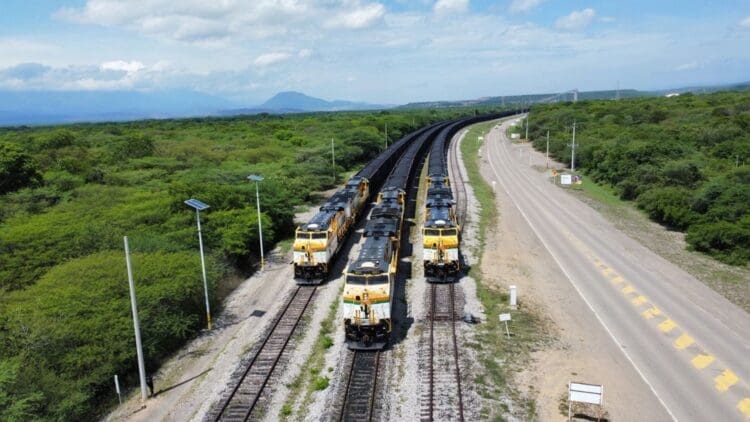Colombia’s President has proposed an expansion to the Cerrejón rail link that could potentially bring the nation’s crumbling rail sector back to life following several years of sharp decline in rail traffic. The South American nation has faced increasing economic distress thanks to inflation and a lack of investment in the existing rail infrastructure. However, thanks to the President, all that might be changing soon. The government’s plan would be to refurbish the line to connect with the existing rail network and deliver crucial goods and employment to thousands of people across several sectors.
Colombia’s President laid out his government’s plans during a visit to the Cesar region
In any country, when a President visits a region, the expectations are relatively the same. The local politicians roll out the red carpet, and El Presidente makes a passionate speech about how the region is integral to the nation’s economy. However, when President Gustavo Petro visited the Cesar region last month, he delivered a speech that has the potential to completely change the region’s economic outlook for years to come.
During his visit, which was full of pompous circumstance, as is the case whenever a President travels, President Petro stated his government’s ambitions to reinvigorate the region by expanding the concession for the Cerrejón rail link that could connect the flailing rail line to the country’s existing rail network and deliver crucial employment for thousands of Colombians.
President Petro outlined the proposal that would expand passenger and agricultural rail freight services
The Cerrejón rail link has been crumbling away while the nation’s politicians opt to focus on a range of other projects instead. However, the President reiterated the government’s ambition to expand the rail network in the region to connect to the Santa Marta – La Dorada corridor via a vast 300km line of new and refurbished infrastructure.
The 150km line was opened in 1984 and plays a crucial role in connecting South America’s largest coal mine to the export terminal at Puerto Bolívar on Colombia’s Caribbean coast. The coal mine is owned and operated by Fenoco and Glencore. The multinational company has welcomed the planned expansion of the line and praised the government’s stance on expanding the nation’s rail network, which can only benefit the people, as well as prop up the country’s economy.
Colombia’s famous banana sector will benefit from the expansion as well
The region is known globally for its delicious bananas, which are exported around the world. The plan would include expanding the rail network to allow easier transportation of agricultural goods on the Puerto Bolívar corridor. When operating at full capacity, the rail network moved around 50 million tonnes of coal annually, but the governments have noted that those numbers have dropped in recent years to around 10 million tonnes.
Colombia will be hoping to improve its rail network, much like its neighbors to the north. The United States has been expanding and upgrading its rail network following renewed interest from the government under President Donald Trump. Beyond the obvious advantages that expanding the Cerrejón rail link would pose, the President added that the agricultural and tourism sectors would benefit massively too.
The success of the proposed plan could depend on the support of the local indigenous tribe
Colombia is an exceedingly large country with a vast array of cultures and peoples. Those indigenous tribes that live in the most rural of settings will need to offer their support to the government’s plan for the project to be a success. The region in question is home to the Wayúu, and if President Petro hopes for the project to be a success, his government will need to engage with the Wayúu people to ensure a smooth and inclusive project that supports the region and its environment. Colombia is home to the most diverse ecosystem in the world, and the government will need to ensure the project does not harm the environment in any way.





